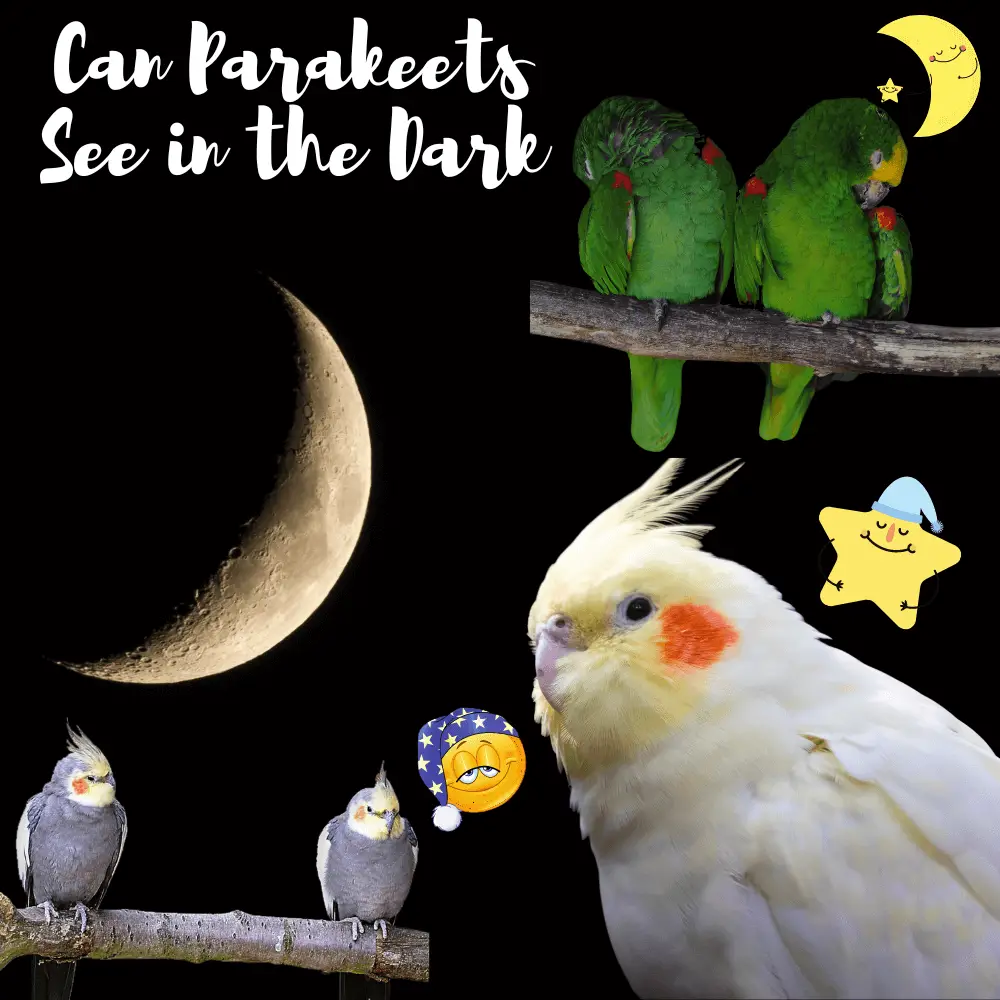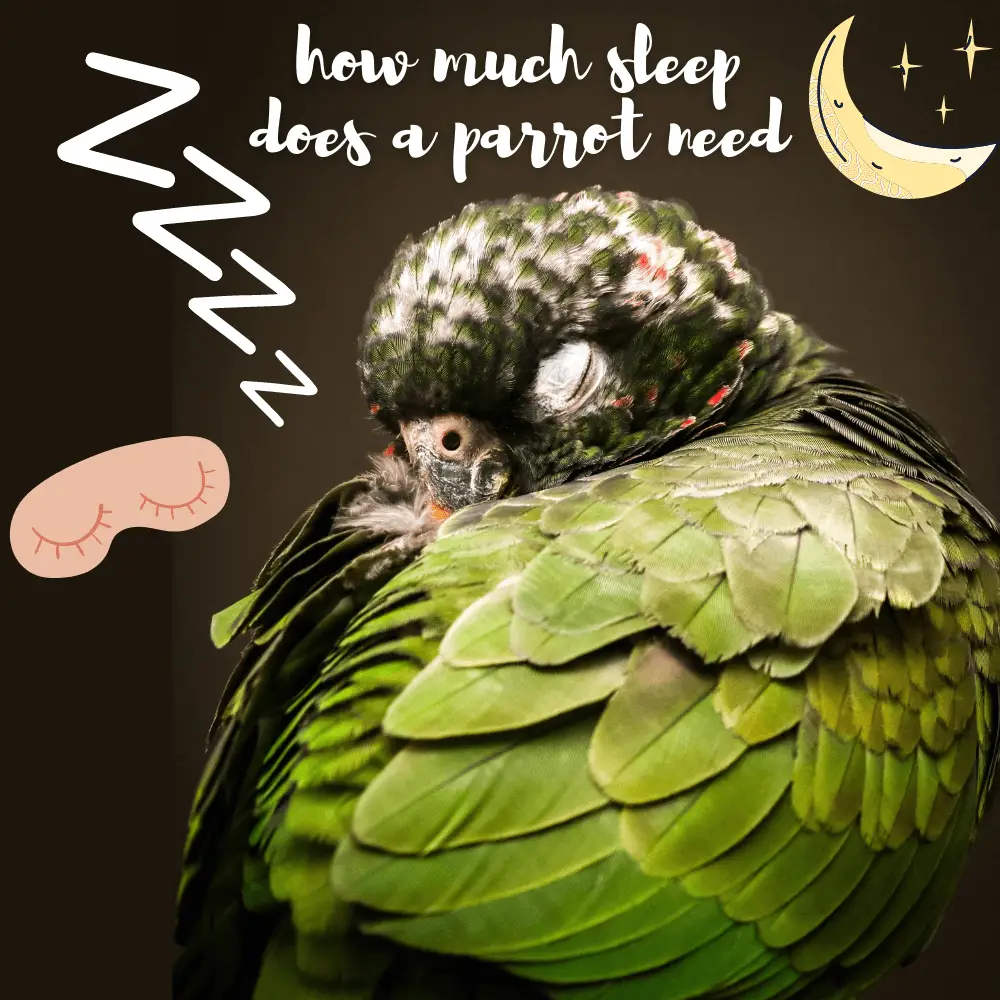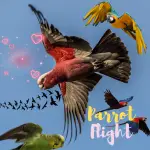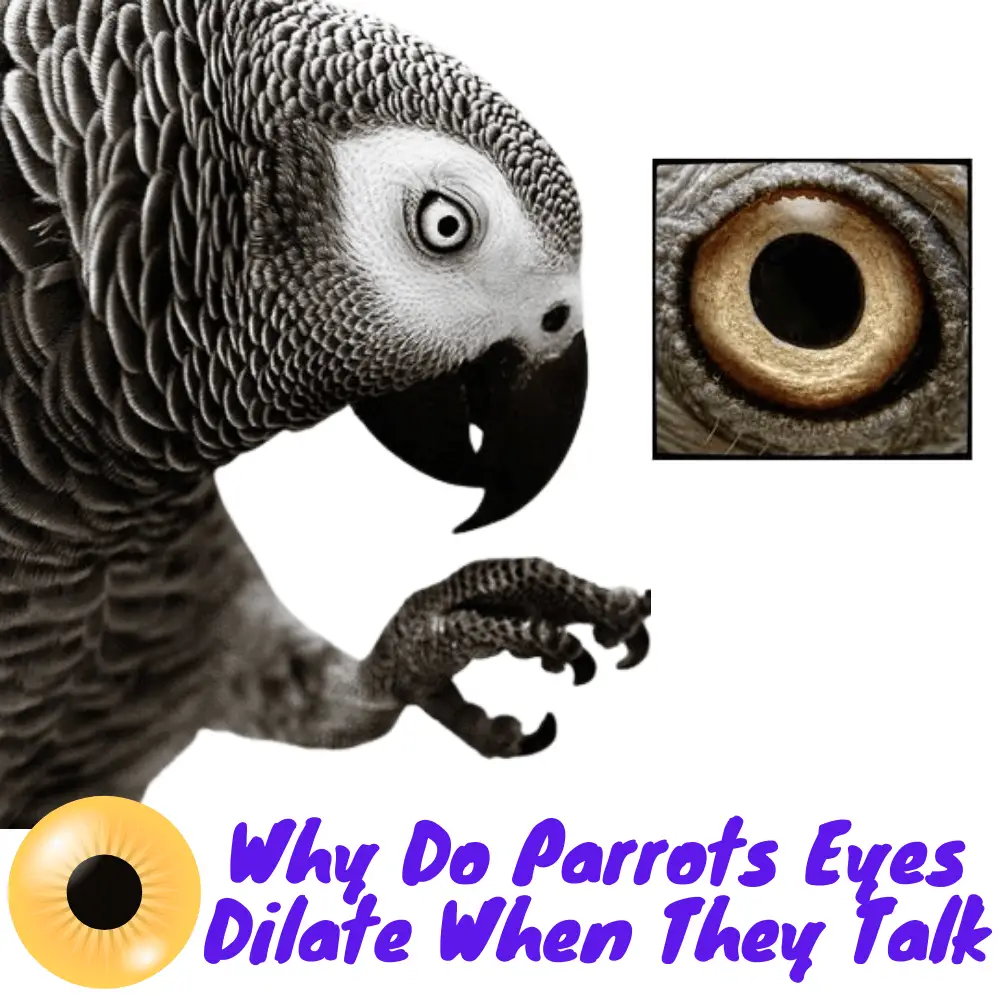
Can Parakeets See in the Dark: the answer is yes Most psittacines are diurnal birds, active during the day. Their vision is excellent, comparable to that of other birds, and much better than ours. The eyes of birds are much larger proportionally when compared to mammals. Sight is the most developed sense of birds. Birds must be able to perceive the smallest detail even from a distance. Most psittacines have a night vision comparable to ours, that is, not very good compared to that of nocturnal birds, such as owls or owls.
In prey such as parakeets, the location of the eyes is paramount. The eyes are widely spaced and placed on either side of the head. This allows for very wide-angle vision. This means that these parakeets can see things coming towards them at almost any angle or direction. In addition, the two eyes work separately from each other. This ability to see in “wide-angle” unfortunately loses a little perception of depth and distance.
Can parrots see in the dark
In nature, this is not a problem, the parrot or parakeet has all the necessary space for escape when it faces danger or a predator. For budgies that live in our homes or in aviaries, the instinctive flight is disturbed by this lack. It is very frightening for them to live in spaces that are too small and that interfere with their instinct to escape. Parakeets must learn to evaluate the distances allocated for the exercise of the flight and it is therefore better to place the cages away from the doors and openings from which people and things can arise so as not to surprise the parrots unduly.
Female parakeets are also influenced by their vision in the choice of males wild because parakeets and other Psittacidae unlike us perceive UV rays that differ in the plumage of males and females even in species where there is no sexual dimorphism. Parrots that would seem to us in every way similar will be easily sexed by those of their clan who perceive the differences. We can observe the intensity of color very well, but the tetrachromatic eye of psittacine perceives the entire UV spectrum, while we perceive light only in the near ultraviolet spectrum. So there is a whole range of fluorescent colors that our budgies can see and that we totally miss.
Can budgies see in the dark?
Our budgies and other Psittacidae also have the ability to see in two ways, a binocular vision like us and monocular vision. With its monocular vision, the parakeet can look in two different places at once. We see only binoculars way, our two eyes do not work independently of each other, but can move easily in their sockets, this is not the case in birds. The bird must move its head. parakeet vision is highly specialized. The owl, for example, which is a nocturnal bird, has both eyes placed in front but can turn its head in an extreme way (nearly 360 degrees in some species). Some species of birds that have their eyes placed very high on their heads can see above their head and almost behind dan some cases.
You will probably have noticed that when your budgie tries to examine an object or looks at you very carefully, she will use only one eye and move her head. This is because psittacines have a small blind spot at the beak between the two eyes. Their two eyes being on either side of their head their binocular vision can not be so precise in front.
Parakeets have nothing to envy us, it would be rather the opposite, it is for when fluorescent men?
The Budgies have relatively good eyesight and are able to see in low light conditions, but they are not able to see well in complete darkness. Like most parrots, budgies have a structure called the pecten in their eyes that helps them to see at low light levels. However, their eyes are not adapted for seeing in complete darkness, and they rely on other senses such as hearing and touch to navigate in a dark environment. It is important to provide your budgie with a well-lit environment and to avoid placing them in complete darkness.

Do budgies have night vision?
Unlike humans, parakeets see ultraviolet light, which is part of the spectrum of natural daylight. On the other hand, some parrot species need UV to differentiate males from females. Most home lighting changes the natural colors of the parrot.
A spectrum with too much blue produces mainly female parrots. For this reason, the use of aquarium lamps for birds should be avoided.
The importance of a full light spectrum Poor light quality acts on the oculoendocrine cycle (light needed by the pituitary gland and epiphysis), and this seriously harms the health of the parakeet. Poorly directed light can cause agitation, feather pulling, general weakening, behavioral problems, and metabolic disorders.
- Vitamin D3 synthesis
Vitamin D3 is necessary for parrots for normal bone growth. Many animals can synthesize vitamin D3 from daylight through their skin. More precisely, it is the UVB of the spectrum that allows this synthesis.
Parrots cannot synthesize vitamin D3 in the same way because their skin is covered with feathers. In most parakeets, the bloodstream brings provitamin D3 to the uropygial gland, which concentrates it into glandular secretions.
These are then applied to the feathers during lubrication and are therefore exposed to UVB. The parrot then swallows the UV-exposed material, when it smooths again, and the oil enters its body in the form of provitamin D. The liver and kidney then convert it into vitamin D3.
How does the parakeet’s vision differ from that of humans?
The retina of the eye contains cones that, when stimulated by different wavelengths of light, transmit information about color to the brain. In humans, there are three types of cones that allow us to perceive the three primary colors: red, green, and blue. This is called trichromatic vision. The combination of these colors allows us to perceive literally thousands of different colors. Birds have a fourth type of cone, which is sensitive to ultraviolet light, so they can perceive four primary colors, the additional color being UV. This is called tetrachromatic vision.
In humans, ultraviolet light cannot pass through the lens, but the bird does not have this problem.
The latest research has shown that some birds can see up to five primary colors (i.e. possess pentachromatic vision) and are able to differentiate between two different UV wavelengths.
The effect of Parakeet daylight
Parakeets perceive light in two ways. First of all, by the eye. The retina of the eye is able to transmit information about the intensity, color composition, and polarization (direction) of light. This information travels in two directions: to the brain via the optic nerve and also to the pituitary gland by a special path.
Parakeets also have another way of perceiving light, a special gland that surrounds the eye called Harder’s gland. This gland measures how long a parakeet receives light called a photoperiod and transmits this information to the epiphysis.
Both the pituitary gland and epiphysis are regulators of the endocrine system and act on the entire metabolism of the parakeet.
See more about parrot and parakeet eyes dilate: Why do parrot eyes dilate when they talk
How does the vision of the budgie work?
Parakeet feathers reflect ultraviolet light. The reflection on the plumage plays a determining role when parakeets choose their mates during mating.
Parakeets such as magnates, which the human eye perceives as black, appear multicolored to other parakeets. This is the same case for white parakeets.
UV perception plays a significant role in food selection. Blackberries and berries appear in a different colors for a bird. Pollination requires the reflection of UV which helps the bird to land on the flower. What a parrot sees affects its appetite. Reds are redder and greens are greener thanks to UV.
The use of UV for orientation
UV perception is used by parakeets to orient themselves. Thanks to the polarization of daylight, a parrot is able to know where the light is coming from. This allows him to orient himself correctly during his flight.
Can parakeets stay in the dark?
Parakeets are diurnal, which means they are actively playing eating flying, and exploring during the day, and sleeping at night like humans. It is important for them to have a consistent daily routine and to have a comfortable, quiet place to sleep that is relatively dark. While it is not necessary for their environment and cage to be completely dark, but it is important for them to have some darkness in their cage to help them feel more secure and relaxed at night.
However, it is not a good idea to leave budgies in complete darkness for extended periods of time, as this can cause them stress and disrupt their natural daily rhythms. It is important to provide your budgie with a well-lit environment during the day and a comfortable, low-light environment at night to help them feel happy and healthy.
Does my parakeet like darkness?
The parakeet may not be particularly fond of being in complete darkness. However, they do need a period of rest and sleep at night, and a little bit of darkness can help your parakeet feel more comfortable and secure. It’s important to provide your parakeet with a consistent daily routine and a comfortable environment, including a good place to sleep that is quiet and has low light levels. You can also provide your parakeet with a sleep tent cage or a covered area,all that to help them feel more secure and comfortable, and relaxed at night.






















